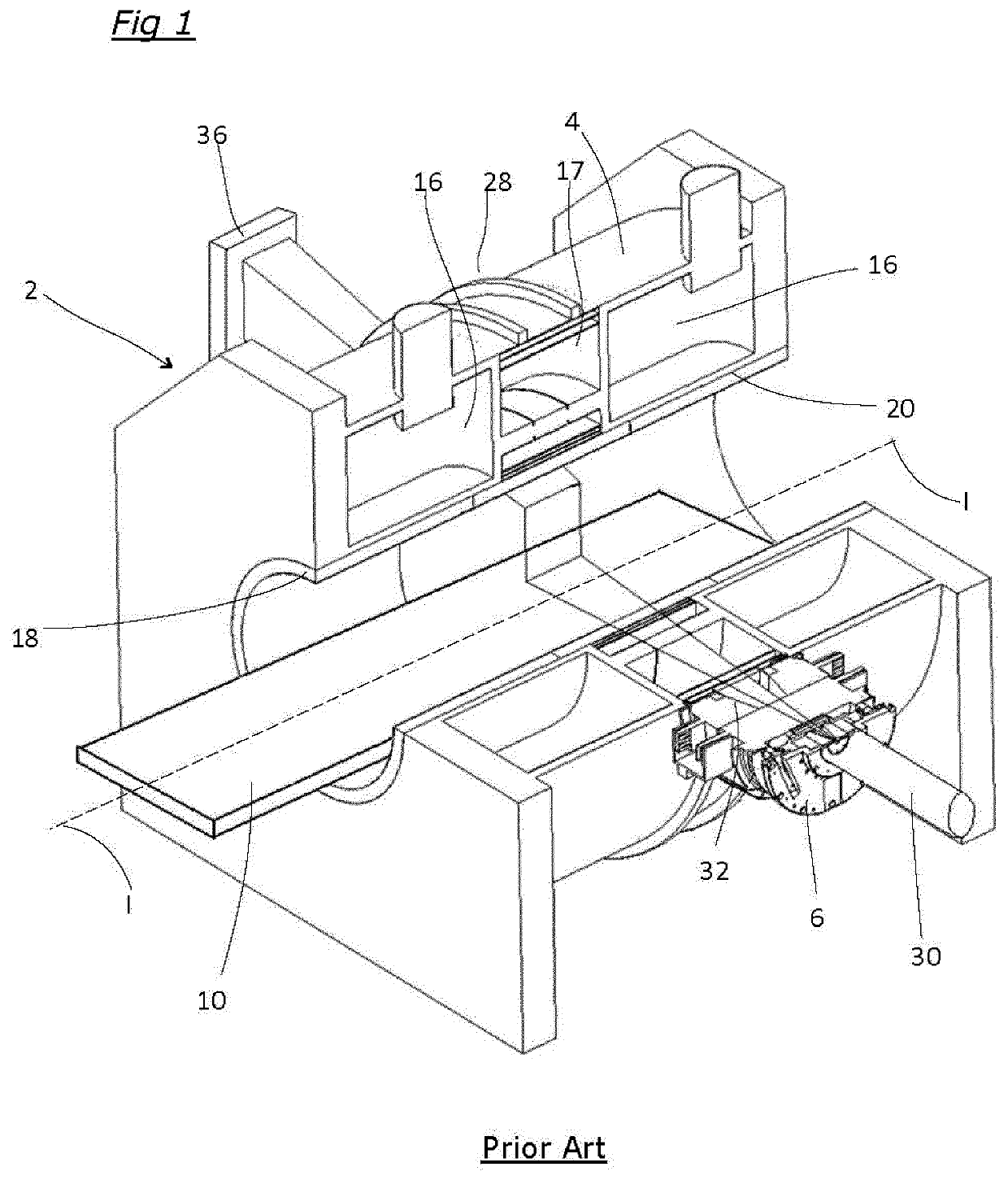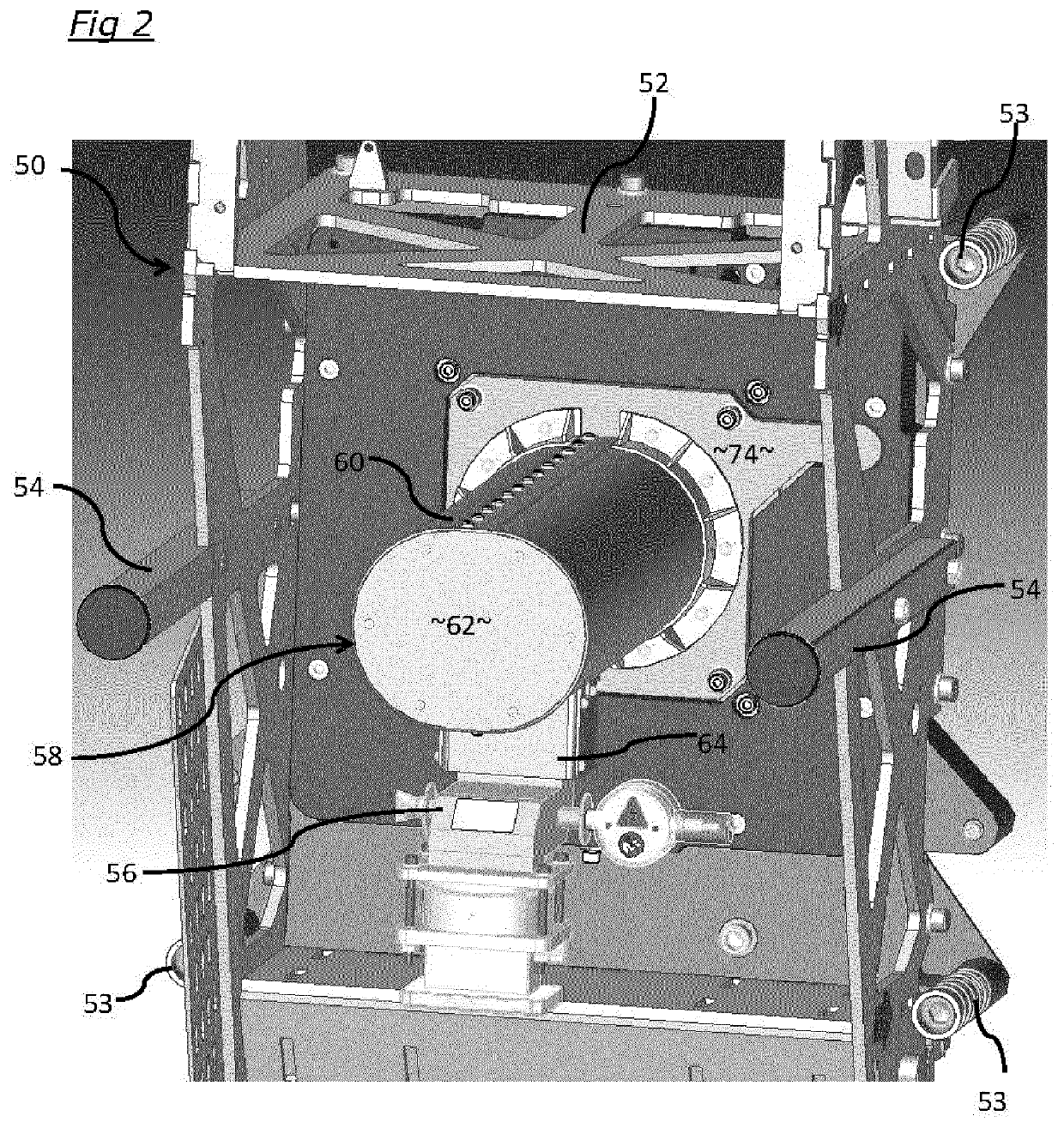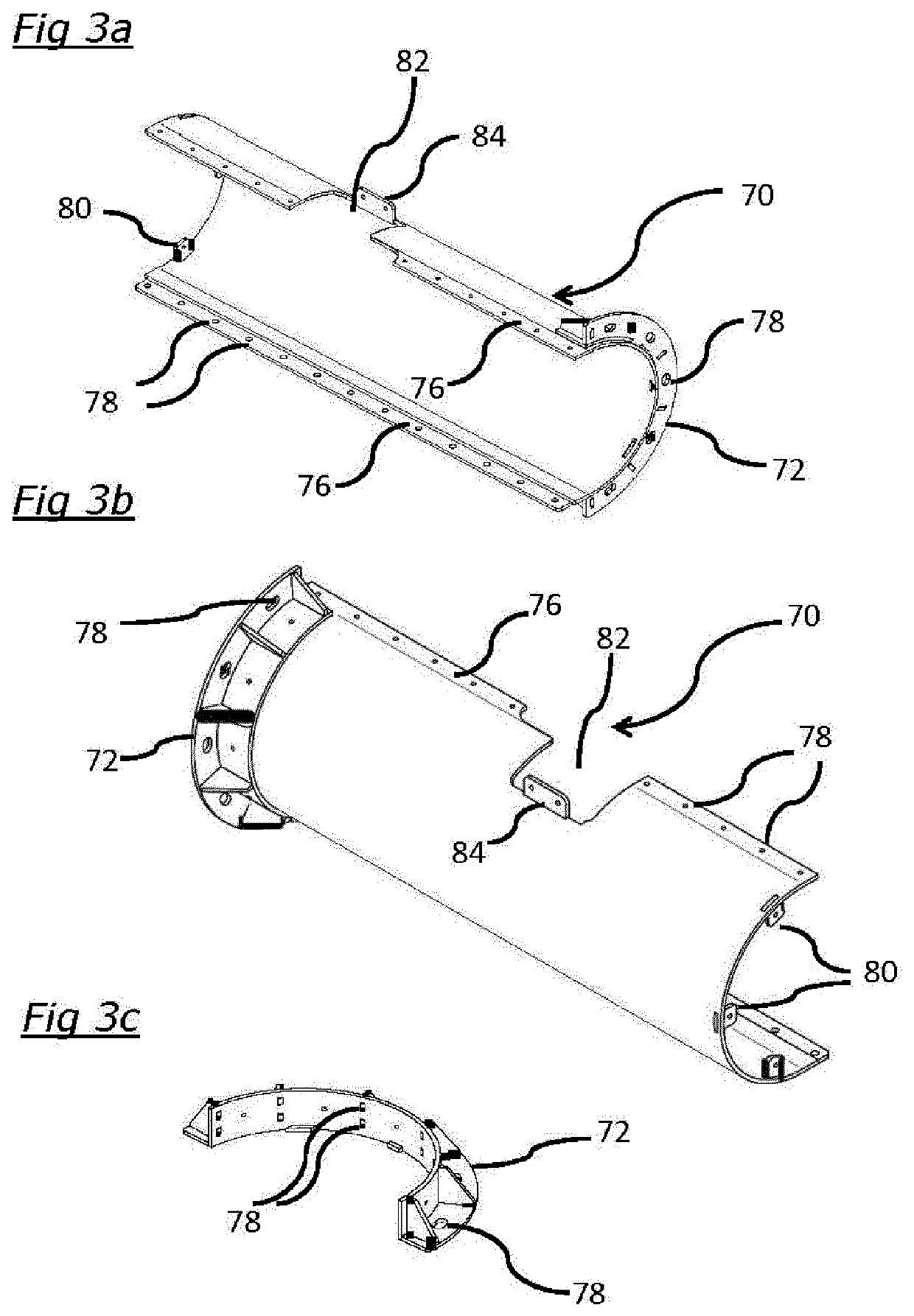Radiotherapy apparatus
a radiation therapy and apparatus technology, applied in radiation therapy, accelerators, therapy, etc., can solve the problems of reducing shielding efficiency, adversely affecting the magnetic flux path through the enclosure and its ability to shield the linear accelerator it encases, and further limiting leakage, so as to achieve effective magnetic shielding, and high magnetic permeability material
- Summary
- Abstract
- Description
- Claims
- Application Information
AI Technical Summary
Benefits of technology
Problems solved by technology
Method used
Image
Examples
Embodiment Construction
[0024]The conventional MRL system shown in FIG. 1 is described above. FIG. 2 shows a linear accelerator assembly 50 which is enclosed in an open framework or cradle 52 for mounting to the rotatable gantry 28 of the MRL by way of attachments 53; although not shown in FIG. 2, the gantry would be behind the assembly 50 shown in FIG. 2, with the legs 54 extending generally radially outwardly from the axis II of the MRI apparatus (as shown in FIG. 1). The linear accelerator comprises an RF guide 56 for electrons emitted by an electron source (not shown) which causes electrons to be injected upwardly in the drawing to a linear accelerator waveguide 100 (which is not visible in FIG. 1 because it is hidden within the waveguide enclosure 58, but is shown in FIG. 6) but the waveguide turns the electrons so that they move in a different direction, and accelerates the electrons radially inwardly with respect to the MRI system, into the plane of the drawing, roughly parallel with the legs 54. Th...
PUM
 Login to View More
Login to View More Abstract
Description
Claims
Application Information
 Login to View More
Login to View More - R&D
- Intellectual Property
- Life Sciences
- Materials
- Tech Scout
- Unparalleled Data Quality
- Higher Quality Content
- 60% Fewer Hallucinations
Browse by: Latest US Patents, China's latest patents, Technical Efficacy Thesaurus, Application Domain, Technology Topic, Popular Technical Reports.
© 2025 PatSnap. All rights reserved.Legal|Privacy policy|Modern Slavery Act Transparency Statement|Sitemap|About US| Contact US: help@patsnap.com



